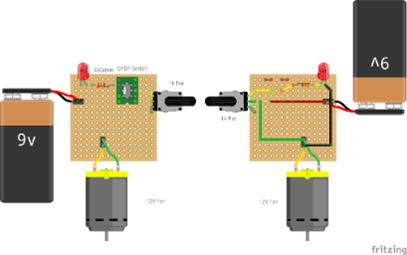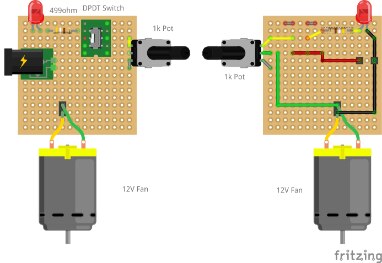 | Learn basic electronics, explore STEM subjects, get what you need to know to get started on electronics projects, and more. | The Learning Circuit |
| sudo Sergeant | ||
| The Ben Heck Show |
Solder fumes can be harmful to your health. Luckily, Karen has a solution. Build a desktop fan that keeps solder fumes away. You can salvage any old fan, as long as it’s DC, for this to work. To build this circuit, you’ll also need a nine volt battery or a twelve volt power supply, a power switch, an LED, and a resistor. You’ll need the resistor to power the LED, which means you’ll need to know the resistance value. Karen goes over calculating the resistance value to use either the 9 volt or the 12 volt power supply. |
Karen's Toolkit:
| Product Name | Part Link |
|---|---|
PC fan, 12V DC 80mmx25mm | Buy NowBuy Now |
Perfboard | Buy NowBuy Now |
Board-To-Board Connector, 2.54 mm, 2 Contacts, Receptacle, 2212S Series, Through Hole, 1 Rows | Buy NowBuy Now |
2x1 male header | Buy NowBuy Now |
Toggle Switch, DPDT, Non Illuminated, On-On, Panel, 5 A | Buy NowBuy Now |
LED, Red, Through Hole, 4mm, 20 mA, 2.1 V | Buy NowBuy Now |
Rotary Potentiometer, 1 kohm, 200 mW, ± 20% | Buy NowBuy Now |
2.1mm DC Power Connector, Jack | Buy NowBuy Now |
AC/DC Power Supply, 12 V, 1 A | Buy NowBuy Now |
| Through Hole Resistor, 499 ohm, 250 mW, ± 1% | Buy NowBuy Now |
The resistor will go in line with the LED. Since this fan is rated for a voltage equal to or higher than the supply voltage, I don’t need to add any more resistance. I also want to be able to control the speed of my fan. This would normally be done using a 555 timer or another chip using PWM. To keep the circuit simple, we’re going to use just a potentiometer instead. It’s not the most efficient way to build this circuit, but it works. Potentiometers are variable resistors. If put in line between the battery and the fan, by adjusting the resistance, we also adjust the amount of voltage supplied to the fan, making it go slower or faster. If we put the LED indicator in series with the motor and potentiometer, it would also be supplied a varying voltage, which would cause it to burn out. We don’t want that, so here’s what we’re going to do.We’ll use a DPDT switch which will put the fan and the LED in parallel. The switch will be supplied the 9 or 12V on both poles. The resistor and LED are in one circuit while the potentiometer and motor are in another, both placed after the switch. This way, when the switch is turned on, both circuits are supplied the 9 or 12V.
| 9V Battery Circuit Diagram | 12V Battery Circuit Diagram |
 |  |
| 9V Battery Wiring Diagram | 12V AC-DC Power Supply Wiring Diagram |
 |  |


Top Comments
-

airbornesurfer
-
Cancel
-
Vote Up
+1
Vote Down
-
-
Sign in to reply
-
More
-
Cancel
Comment-

airbornesurfer
-
Cancel
-
Vote Up
+1
Vote Down
-
-
Sign in to reply
-
More
-
Cancel
Children